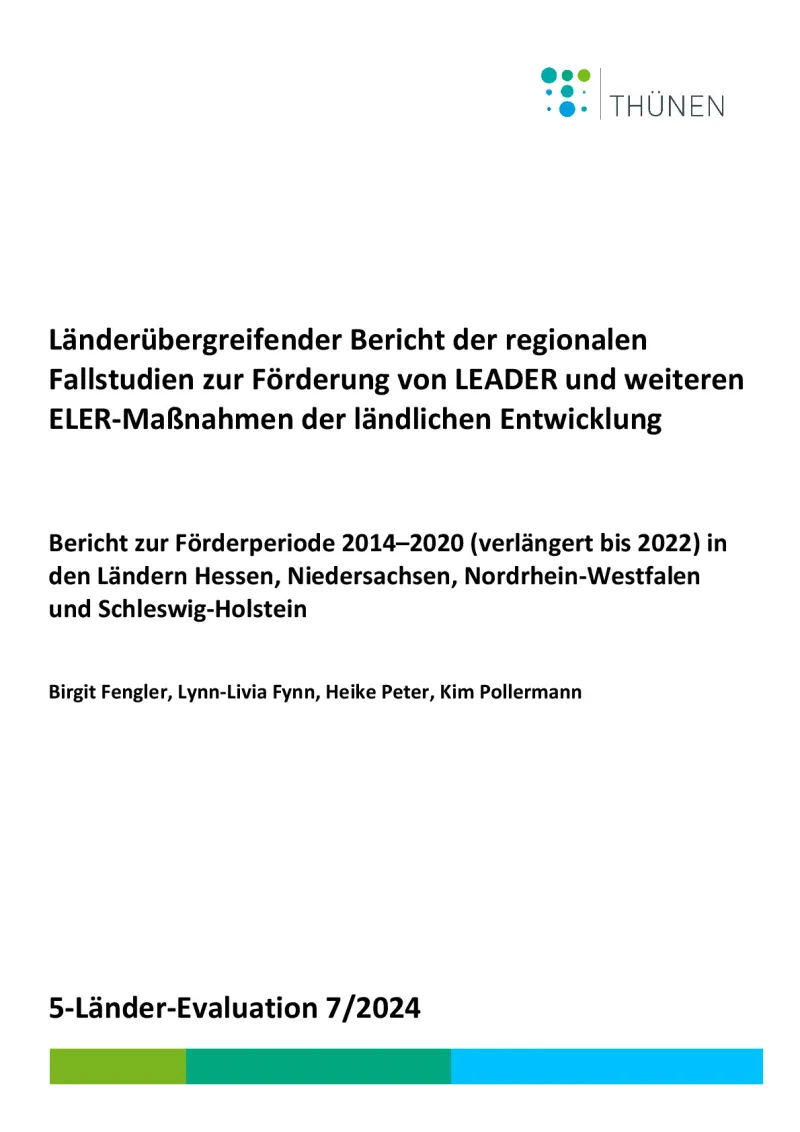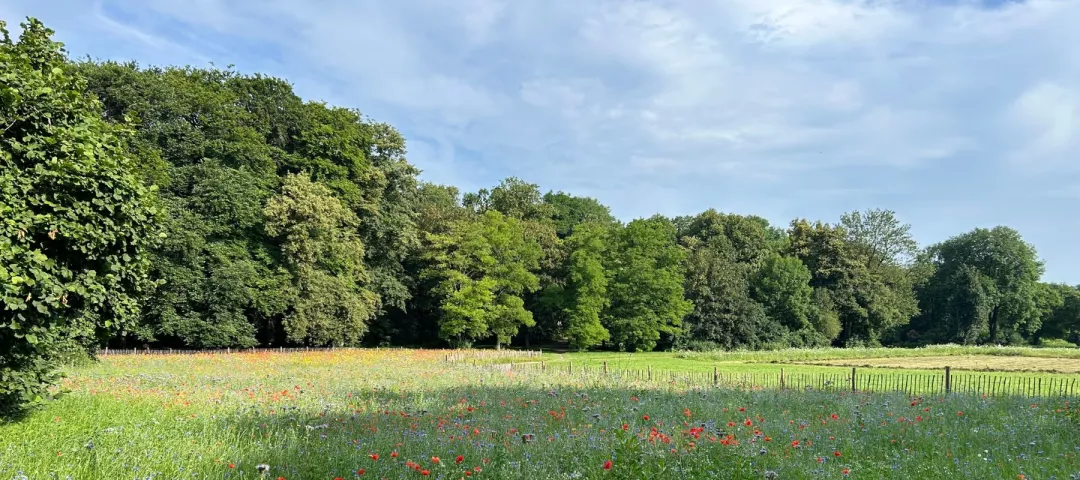Regional cross-country report to support LEADER and other EAFRD rural development measures
The report gathers different case studies to support LEADER and other EAFRD rural development measures in the German federal states of Hesse, Lower Saxony, North Rhine-Westphalia and Schleswig-Holstein.
- Germany
- 2014-2022
- Environmental impacts


The results of the case studies presented in the report aim to provide insights into the implementation and impact of the funding under EAFRD Priority 6B (promoting social inclusion, poverty reduction and economic development in rural areas), addressing Evaluation Question 17 of the Common Evaluation Framework (CMEF): To what extent has the interventions under the rural development programme supported local development in rural areas?
The report presents the results of the regional case studies conducted in 2022/23 in each of the two LEADER regions in Hesse, Lower Saxony, North Rhine-Westphalia and Schleswig-Holstein, as well as an integrated rural development region in Lower Saxony.
The effectiveness of investment and non-investment interventions is assessed. The analysis is carried out with the help of impact models to illustrate the outputs, results and impacts of LEADER and integrated rural development projects.
The detailed concept of the five-country evaluation developed its own evaluation criteria and indicators. The analysis considers the effects of the funding in 12 thematic areas of rural development as well as in the cross-cutting themes of innovation, digitalisation and equality.
Expert interviews with the project participants and the LEADER regional management were the main sources of information.
Assessing impact is a major challenge in complex subject areas. Due to the variety of project types in different fields of action, the short observation period, and the direct and indirect links to other influencing factors, the systematic assessment of impact has limits.
Therefore, it should be made clear that this is not a (rigorous) impact evaluation as it was not possible to conclusively record the effects of the measures at the time of the data collection phase, and the methodological requirements (e.g. before-after comparison, control groups) were not met due to the framework conditions of the support measures (including the variety and number of projects, different start and end dates) and the available resources. The majority of the impacts presented are hence only intended for the time being and should only be understood as possible impacts.
The cooperation between LEADER and integrated rural development (DE: ILE) projects works well. The ILE projects are mostly investment projects of intervention types that have usually been in use for many years. These established types of intervention are also addressed via LEADER. In addition, LEADER projects can be partly preparatory for further ILE projects or develop and test new types of intervention.
The European Agricultural Fund for Rural Development (EAFRD) contribution varies depending on the field of action, although at the local level and in the fields of action, such as ‘youth’, ‘local supply’ or ‘social centers’, local needs can be well covered by EAFRD funding. Mobile projects in particular can close ‘gaps’ in the fulfilment of needs in various locations.
Many projects have a long-term impact and multiplier function beyond the direct impacts, namely through subsequent further investment projects or improved options for action by the local actors and the networks established.
The early participation of future users is recommended to adapt the services to the specific needs of different target groups and to encourage them to take responsibility. There is also a need for committed people in the local communities who initiate projects and promote local commitment.
In the case of business support from public funds, possible deadweight effects must be considered as a major problem of supporting private sector actors. Deadweight losses are to be assessed negatively if the benefits of the project exclusively benefit the subsidised company. If the project also has clearly positive effects on social and regional objectives, the use of public funds may be justified. As a result, it is necessary to weigh up the objectives of the project and the (anticipated) relationship between business and societal benefits when assessing each individual case.
In conclusion, the potential for influence through project selection criteria should be used even more consistently in order to optimise projects in terms of effectiveness and fulfilment of social needs.
Author(s)
Thünen Institute: Birgit Fengler, Lynn-Livia Fynn, Heike Peter, Kim Pollermann